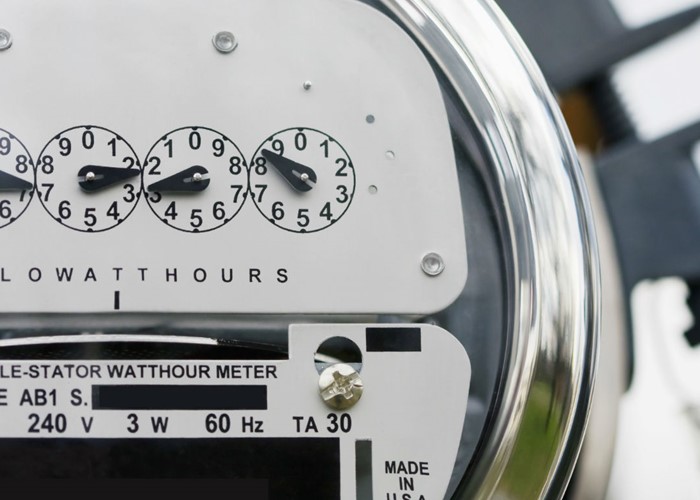The utilities tariff that tricks you

If you're moving house this year, beware the deemed tariff! Laura Starkey shows you how to avoid the energy providers' sneakiest trick.
It is a truth universally acknowledged that moving house is stressful - not to mention expensive.
Yes, you're probably thrilled to think that sometime soon you'll be settled and happy in your new home.
But in the meantime, you're devastated about the family heirloom that's been smashed, your other half is refereeing the children's wrestling match over bedrooms and -- worst of all -- nobody knows where the kettle is.
Amongst this chaos, and amid a sea of cardboard boxes, you're unlikely to be thinking about who supplies your gas and electricity.
However, the following information about how you'll be billed for your energy might make you think about switching suppliers before you switch on your appliances in your new home.
What's the problem?
The problem is that gas and electricity companies will automatically apply deemed tariffs to a property as soon as they know the old occupiers have moved out.
While a deemed tariff is simply the company's standard quarterly rate, this is usually about 25% more expensive than the cheapest tariff your supplier could offer you. Even worse, when you call electricity or gas companies to let them know you've moved into a property, you unwittingly sign up to this bum deal.
For a typical three-bedroom house, utilities should cost around £1,150 a year - yet UK households collectively spend £250m more than they need to, simply because they are unknowingly paying inflated rates.
Suddenly, moving house looks even more expensive than before!
As the deemed tariff is probably the most profitable rate for your utility company, they're unlikely to come to you with a better offer. Therefore, it's a good idea to investigate your options and bag yourself a better deal as soon as possible.
Can I switch to a better tariff?
In a word, yes.
Rachel Robson gives you the lowdown on five ways to cut your energy bills
While most of us might consider waiting to see how much energy we actually use before switching suppliers, any delay in getting off a deemed tariff could prove expensive.
The new company responsible for your utilities will have data on how much gas and electricity the previous occupants of your property used. It's definitely worth asking for this, even though companies might be reluctant to pass it on.
If you have the opportunity, you could even ask the previous occupants of your home how much energy they’ve used each year.
Should neither of these approaches prove fruitful, simply calculating the average of your gas and electricity usage for a few months should help you see just how expensive a deemed tariff is.
You can get a fair idea of how much gas and electricity you'll use based on the size of your property, as you'll see in the tables below.
|
Property size |
Average Electricity Consumption (kWh) |
|
Small (1-2 bedrooms) |
3,300 |
|
Medium (2-3 bedrooms) |
4,500 |
|
Large (3 or more bedrooms) |
5,500 |
|
Property size |
Average Gas Consumption (kWh) |
|
Small (1-2 bedrooms) |
20,000 |
|
Medium (2-3 bedrooms) |
22,000 |
|
Large (3 or more bedrooms) |
25,000 |
All in all, there's little to be gained by waiting to switch suppliers.
If you think you've over-estimated your usage after a couple of months, you can always review the tariff you're on then.
So what should I do?
The best time to switch is less than two weeks before you move house. That way, you won’t be charged for energy before you move in.
Remember that, even after you state your intention to switch suppliers, it could take up to eight weeks for your request to be processed. This means that even a fortnight's delay in finding a better deal could see house-movers spend two months on a deemed tariff!
Conversely, finding a quote and setting up the switch should take just a few minutes, and could save you hundreds of pounds a year. Check out our gas and electricity comparison service to find the cheapest deals around at the moment.
It's also worth noting that even after you've dealt with your deemed tariff, your utilities suppliers will still be keen to charge you as much as possible.
With energy prices being so volatile these days, a great deal in October might well have become ghastly by February, so it's a good idea to put your switch date in your diary and do a regular check on whether you're still getting the best rate.
Applying deemed tariffs is a sneaky trick utilities companies will use to charge you more -- so don't let them!
Plug in your PC at the same time as the kettle (when you eventually find it!), and make sure your deemed tariff is doomed.
More: Compare and switch gas and electricity suppliers | Get Cash For Switching Your Energy Tariff
Most Recent
Comments
Be the first to comment
Do you want to comment on this article? You need to be signed in for this feature







